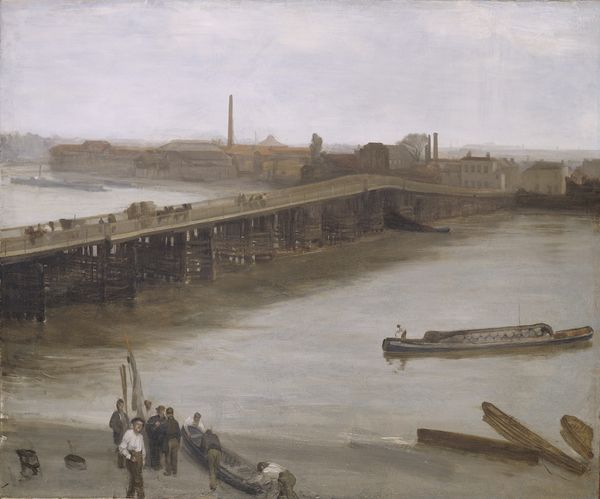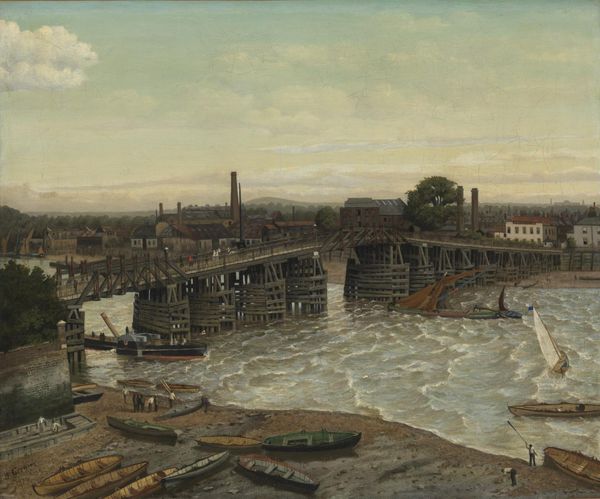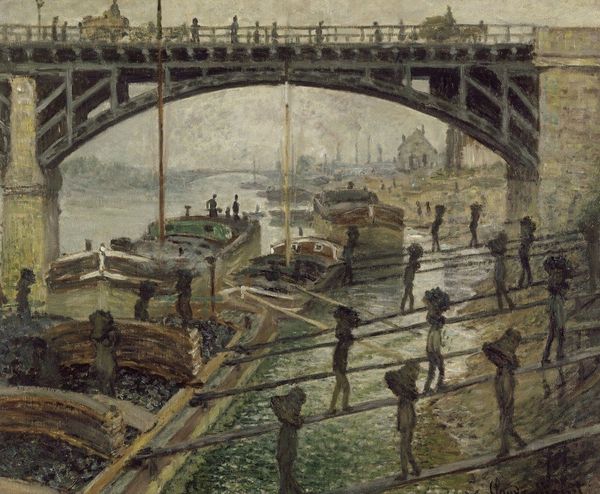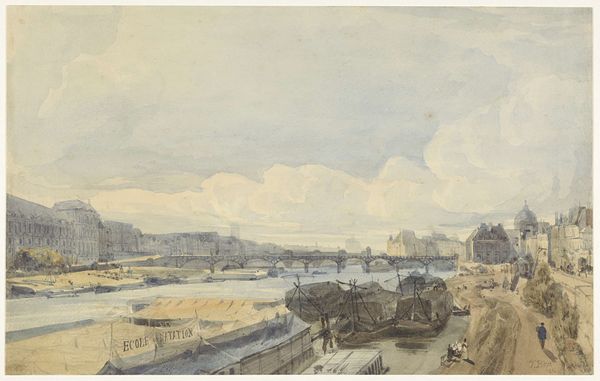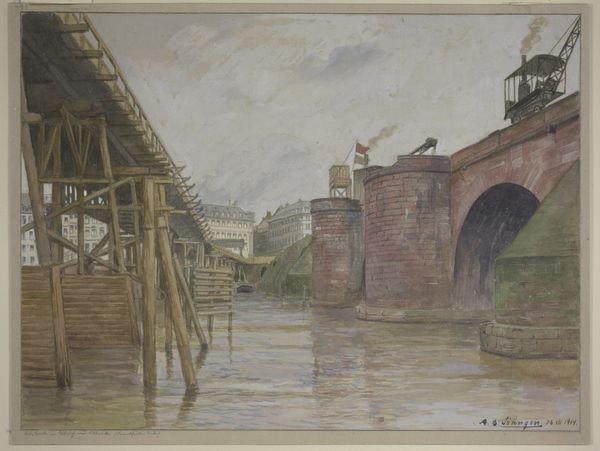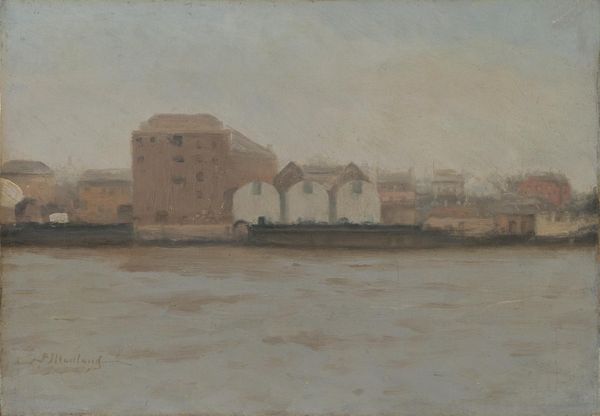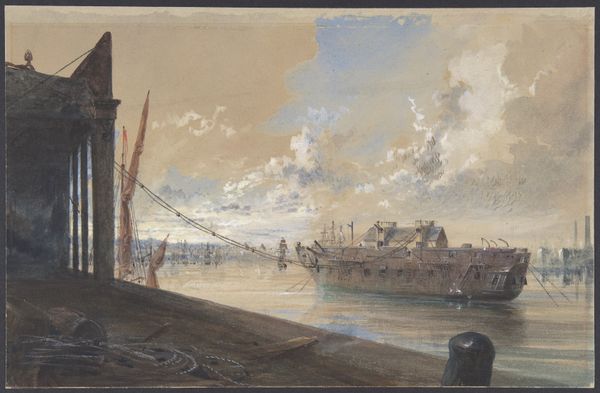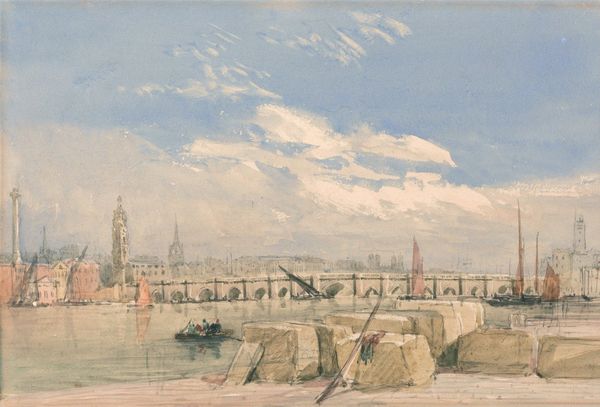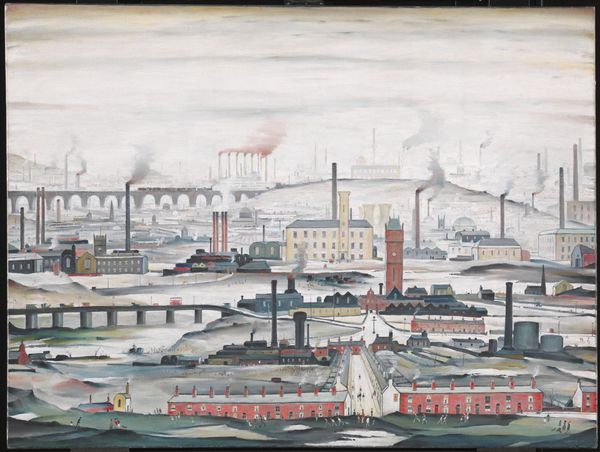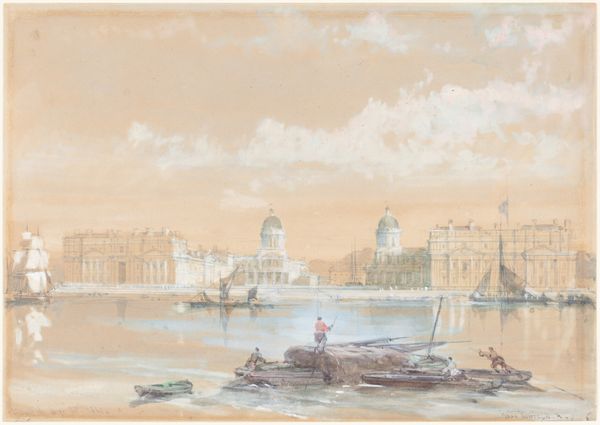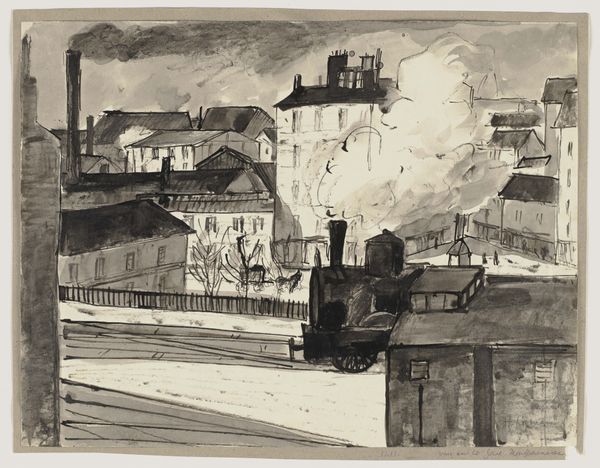
Dimensions: 65 cm (height) x 81 cm (width) (Netto)
Editor: Here we have Albert Marquet's "Quai de Paris at Rouen. Rainy Weather," painted between 1910 and 1914. The oil on canvas depicts a cityscape in a subdued, almost melancholic tone. The composition is quite interesting with its strong horizontal lines created by the river, bridge, and buildings. What strikes you most about this work? Curator: What fascinates me is the artist’s mastery of pictorial space, carefully rendered through the distribution of color. Note how Marquet employs a limited palette of grays, blues, and browns to evoke a specific atmospheric condition. The repetition of rectangular forms, from the barges in the foreground to the buildings in the distance, serves to create a structural rhythm, reinforcing the two-dimensionality of the picture plane. Do you observe how the artist balances flatness with a subtle illusion of depth? Editor: Yes, I see what you mean. It's almost like he's flattening the city into shapes. I'm wondering if the absence of bright colours serves to emphasize the architecture even more? Curator: Precisely! Color is used less for descriptive purposes and more as a tool to define spatial relationships and create a cohesive formal structure. Consider the texture created by the brushstrokes and how they define shapes. The subtle gradations in tone invite prolonged viewing and contribute to the overall formal harmony. Note how even the suggestion of human figures is reduced to mere vertical accents within the broader compositional scheme. Editor: So, by stripping away the representational details, Marquet's inviting us to concentrate more on how he’s organized the visual elements? Curator: Exactly. He’s less concerned with depicting Rouen accurately and more with exploring the formal language of painting: line, shape, color, and texture. The painting, in this light, is a study in the essential elements of art-making. Editor: I never thought about it in those terms. Seeing the painting as a formal exploration really opens up a different way to appreciate it. Thank you! Curator: It is always a fruitful exercise to shift our perspective and examine the language of visual art, thereby moving closer to grasping the artist’s intent.
Comments
No comments
Be the first to comment and join the conversation on the ultimate creative platform.
